What Is the Windows Defender Security Warning? How to Get Ride?
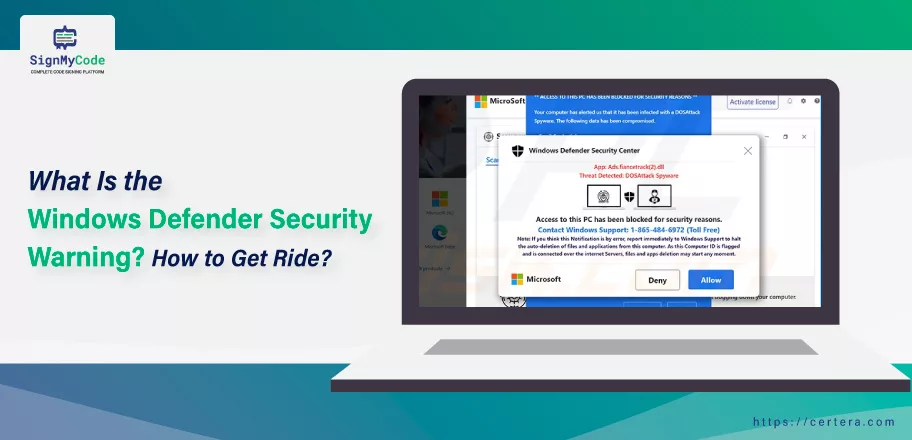
Windows Defender is an in-built tool enabled by default to protect the system from malicious files and activities. However, in recent times, a scam has been operated in the name of Windows Defender Warning. And in this blog, we are going to disclose its details and the process to get rid of it.
So, let’s get started.
What is Windows Defender Warning?
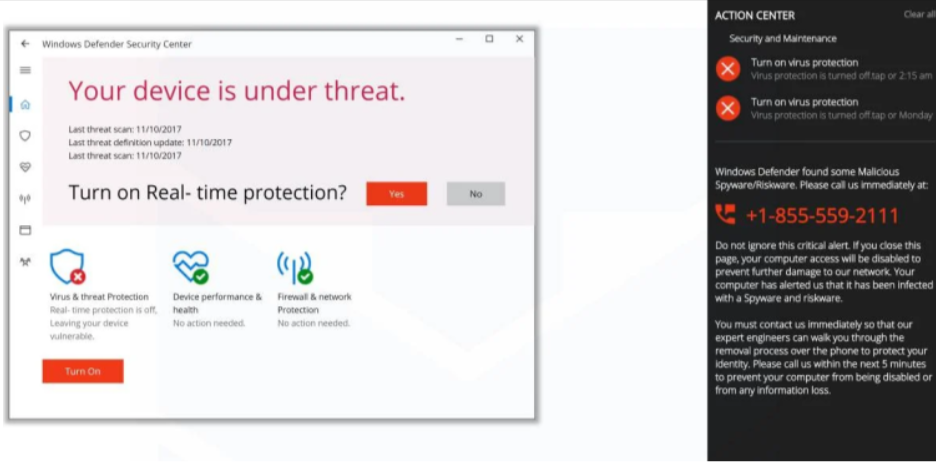
Windows Defender Warning is nothing but a scam executed by cyber-attackers to gain valuable information about the victim. This warning is created like a legitimate warning message to manipulate the target users into clicking on them.
In Addition, the Windows Defender Warning Scam gets Executed as per Below:
Step 1: The fake Windows Defender Warning is shown to the user.
Step 2: The user clicks on the warning and gets redirected to a new third-party site. The opened site is also created by the attacker with spoofed information.
Step 3: There can be two possibilities now.
Firstly, a fake number and chat option can be provided under the name of a Microsoft support executive, who can help resolve the warning. This support executive is none other than the attacker, who is going to use social engineering to retrieve login credentials, bank details, and all other such information.
Secondly, clicking on the link can automate the download and installation of a malicious file on your system. Further, the file can create backdoors, spread viruses, install spyware and keyloggers, and execute ransomware attacks.
Reason Behind Windows Defender Warning Scam
The exact reason behind this scam is still unidentified. However, the security experts have discovered the following potential purposes behind it:
- The scam can be for monetary purposes. Numerous fake call centers present globally are caught using this scam to access victims’ bank accounts and transfer money illegitimately.
- The scam can be for breaching the data of the victim and then using it for personal use.
- The attacker can sell the breached information. Such details are used by call centers to run their campaigns.
Likewise, as mentioned, there can be many more reasons for the attacker behind the Windows Defender Warning scam.
Why are You Seeing The Warning?
The fake Windows Defender warning is mostly shown on web browsers, such as Firefox, Chrome, Microsoft Edge, and others. Primarily, it’s displayed when you click on a malicious link.
In addition, it can also be triggered by clicking on an ad showcased by an attacker.
Moreover, cracked versions of applications also contain the files, triggering your browsers to display the defender warning scam message.
Hence, the following are the three primary reasons why you see the Windows Defender warning:
- You have clicked on a malicious link.
- You have downloaded a spoofed application containing the malicious file.
- Malware has entered your system through any other means, such as mail attachments.
Windows Defender Warning: Are All Warnings a Scam?
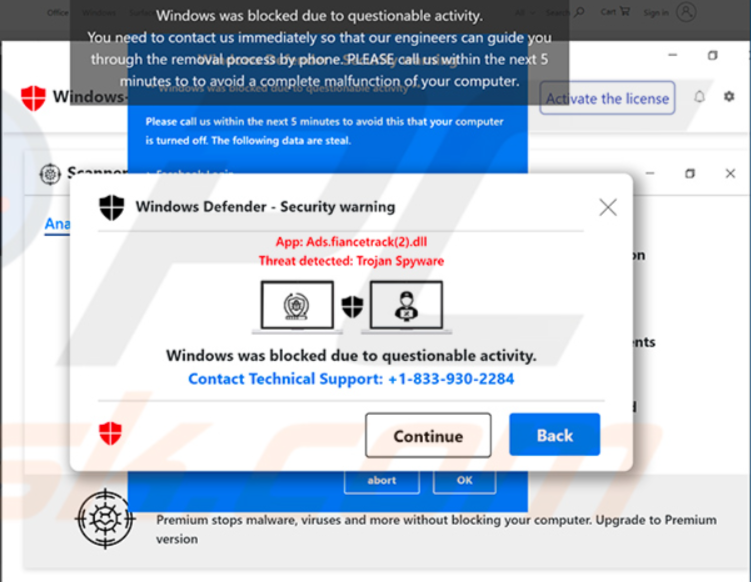
Even after understanding the Windows Defender warning scam, a question arises: Are all such warnings scams?
The simple answer to this question is No. Not all warnings are scams, but the ones you see on your browsers probably fall into the scam category. But, when a legitimate defender warning will be shown on your desktop, and you will click on it, you will not be redirected to a third-party website.
Additionally, you should remember that whenever you have to reach out to Microsoft customer support, always contact them through channels available on the official website. Also, you are not required to share your personal and bank details with any support executive.
How do you Get Rid of the Windows Defender Warning?
To get rid of the Windows Defender warning, you can follow the below procedure:
#1: Detect the Scam by Yourself
Now you know that Windows Defender Warning is a scam. So, from now on, whenever you see it, you need to ignore that. In addition, you should learn about phishing and spoofing attacks along with the personal digital security best practices.
As a result, you will avoid downloading any malicious software, leading to retain data integrity, availability, and confidentiality.
Recommended: Top 10 Security Tips to Prevent Downloading Malicious Code or Data
#2: Force Close the Warning
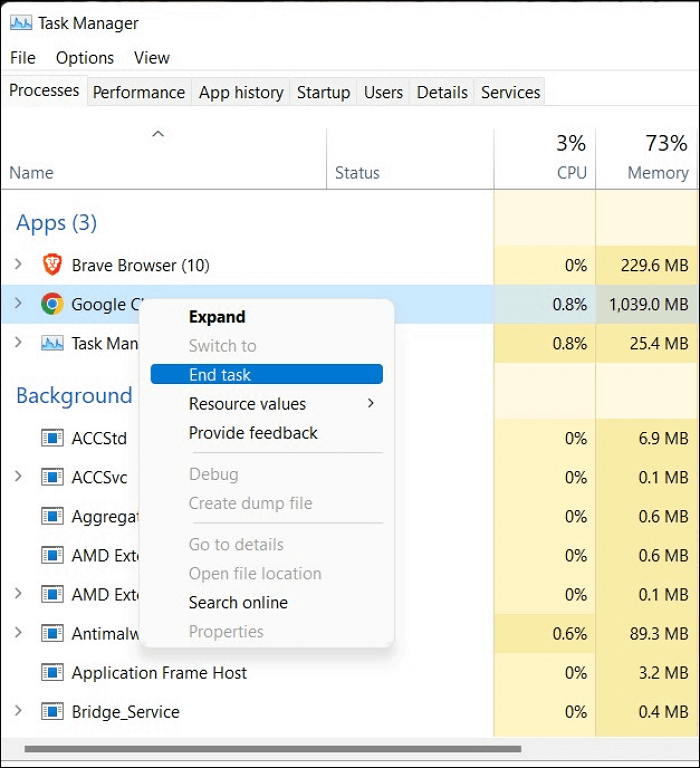
To force close the warning message, undergo the following process:
Step 1: Go to “Start” >> “Taskbar”
Step 2: You will view a list, showing all current processes being executed on your computer.
Step 3: Discover the process running the fake Windows Defender warning and click on it.
Step 4: Click on “End Task” to eliminate the process.
Step 5: Restart your computer system and again check whether the task is running now or not.
#3: Scan and Remove Malware
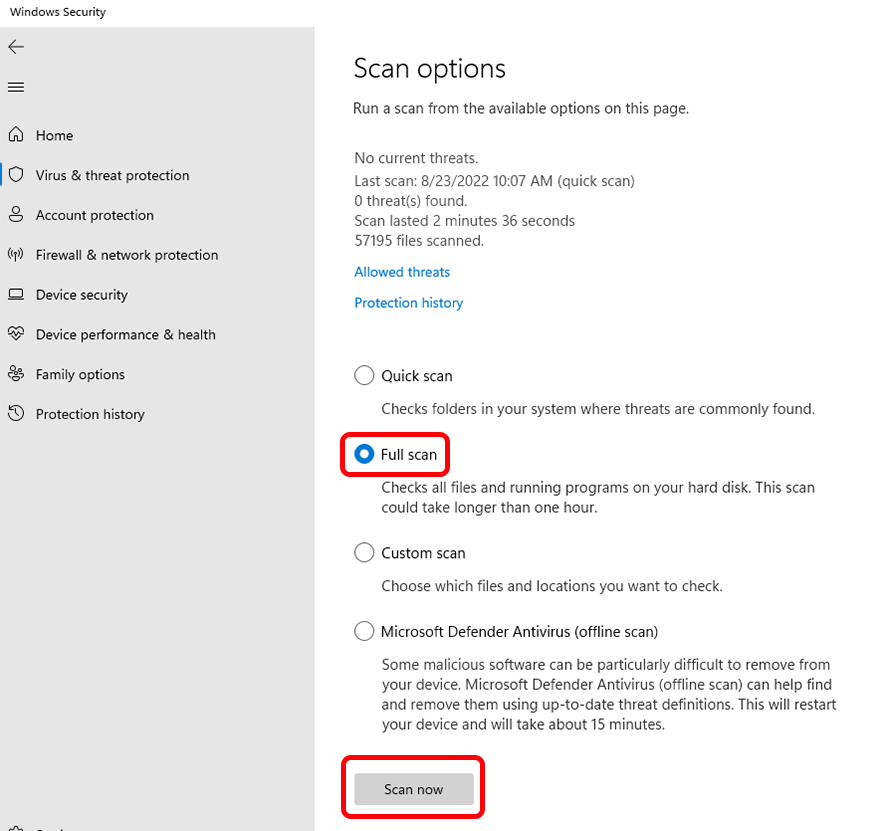
The best way to remove malware from a Windows system is to use the original Windows Defender. To do so, follow the below process:
Step 1: Navigate to “Start” and search for “Windows Defender.”
Step 2: Once the defender opens, choose “Full” and click on “Scan Now“.
Step 3: You will be provided with all the details of the malware and the removal message after the scan finishes.
#4: Remove Warning from Chrome Browser

If you face the scam defender message on Chrome browser, use the below process to get rid of it.
Step 1: Click on the three-dot icon, which is available in the top right section.
Step 2: Choose the “Settings” option.
Step 3: Go to the “Reset settings” option.
Step 4: Click on the option with “Restore settings to their original default“.
Step 5: Click on the option “Reset settings” to confirm.
After this, any extension triggering the message will be removed, and you will no longer see the fake warning message.
#5: Remove Warning from Microsoft Edge
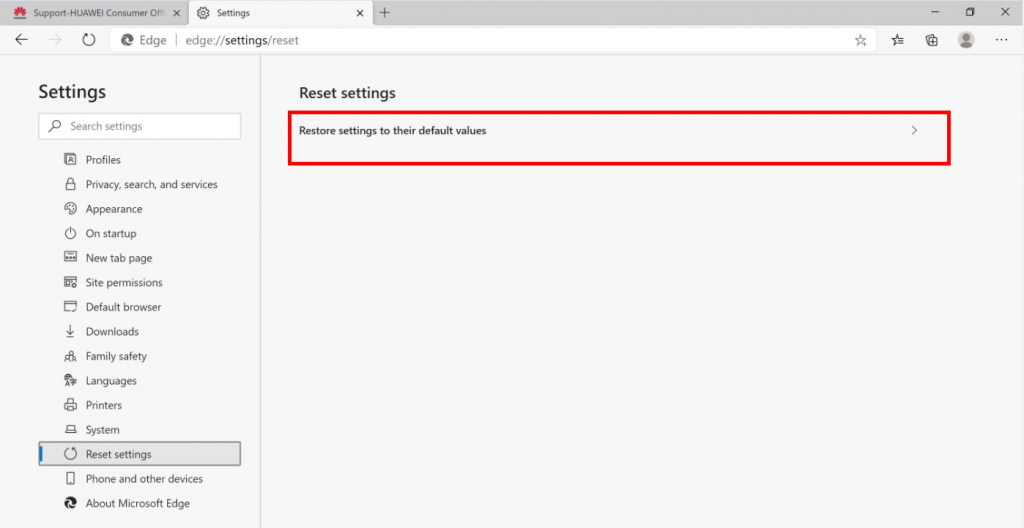
On the Microsoft Edge browser, you can follow the below approach.
Step 1: Using the three-dots icon, open the “Settings”.
Step 2: From the options provided, choose “Reset Settings”
Step 3: Click on the option with “Restore settings to their default values“
Step 4: Click on the “Reset” to confirm the choice you made.
#6: Remove Warning from Firefox

To solve the issue on Mozilla Firefox, follow the below steps:
Step 1: Open the browser using the three horizontal line icons and click on “Help“.
Step 2: Click on the “More troubleshooting information”.
Step 3: Click on the “Refresh Firefox” option, which is present on the right side.
Step 4: Once you confirm all details, click on “Refresh Firefox.” As a result, the issue will be resolved, and there will be no warning message.
#7: Clear the Browser Cache Memory
Sometimes, the files causing defender warnings are stored in the browser’s cache memory. You can clear the cache and restart the browser to check whether the issue remains or is resolved.
You can clear the cache by going to the browser settings and searching for browser data. In Chrome, you should navigate to “Settings” >>> “Privacy and Security” >>> “clear browsing data“.
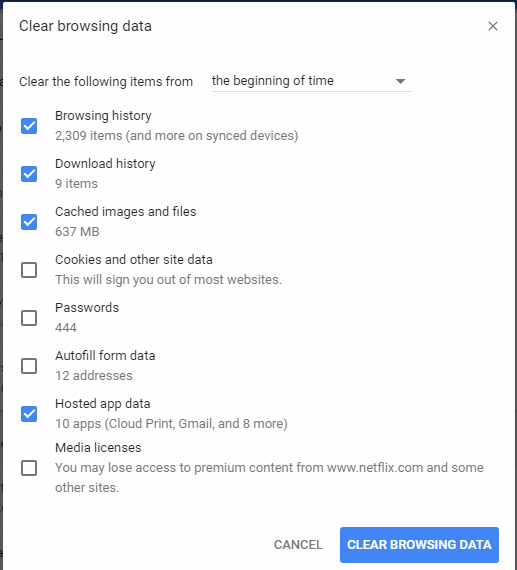
In addition, you need to ensure that whenever navigating to a website, you only accept the required cookies unless it’s necessary.
Concluding Up
The Windows Defender warning you see on the browser is a scam, identified and exposed by security professionals. Illegitimate actors are using this scam to gain valuable information about the victims, such as bank and personal details. The attackers pretend to be Microsoft support executives and tell you that your system is infected and remote access is required.
To safeguard yourself from the scam, you should avoid clicking on any malicious link, downloading a cracked version of the file, or clicking on a phishing link/mail. In addition, follow the above-listed approaches to remove any triggering mechanisms and secure yourself.

